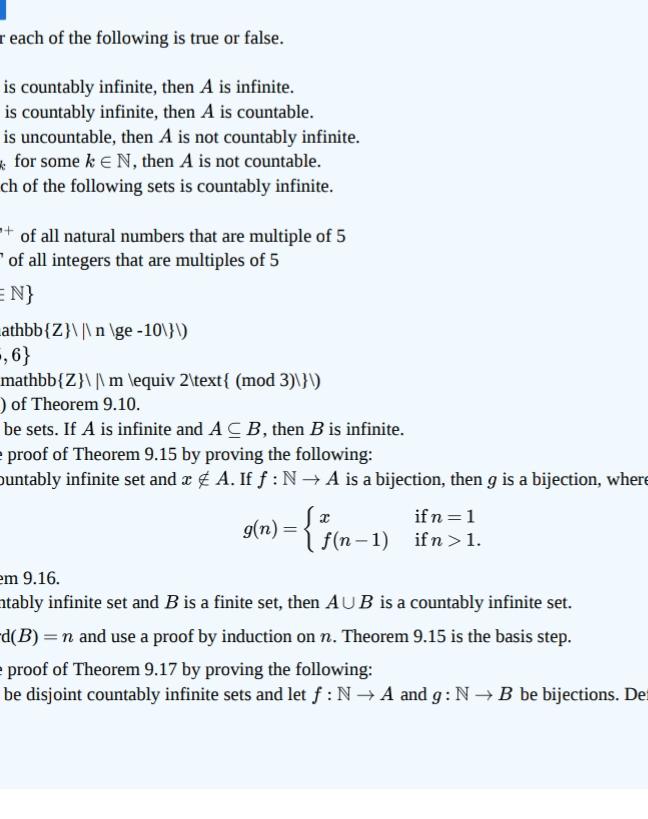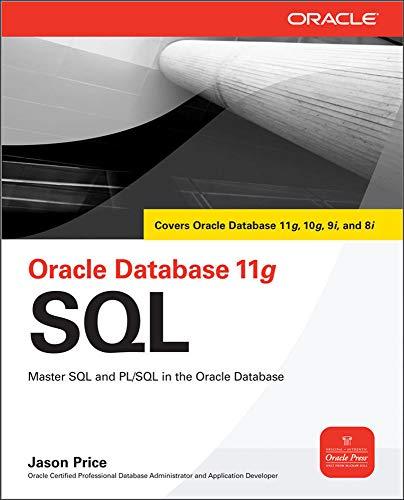Question
h reach of the following is true or false. is countably infinite, then A is infinite. is countably infinite, then A is countable. is
h\ \ reach of the following is true or false.\ is countably infinite, then
Ais infinite. is countably infinite, then
Ais countable. is uncountable, then
Ais not countably infinite. for some
kinN, then
Ais not countable. ch of the following sets is countably infinite.\ of all natural numbers that are multiple of 5 of all integers that are multiples of 5
=N\ athbb
(Z)/(/)(/)/(/)()/(/)\ ge
-(10)/(/)
,6\ mathbb
(Z)/(/^(^()))mlequiv
(2)/(/)text((mod3)/(/))/(/)\ of Theorem 9.10.\ be sets. If
Ais infinite and
AsubeB, then
Bis infinite.\ proof of Theorem 9.15 by proving the following:\ ountably infinite set and
x!inA. If
f:N->Ais a bijection, then
gis a bijection, where\
g(n)={(x if n=1),(f(n-1) if n>1.):}\ 9.16.\ atably infinite set and
Bis a finite set, then
A\\\\cup Bis a countably infinite set.
d(B)=nand use a proof by induction on
n. Theorem 9.15 is the basis step. proof of Theorem 9.17 by proving the following: be disjoint countably infinite sets and let
f:N->Aand
g:N->Bbe bijections. De

Step by Step Solution
There are 3 Steps involved in it
Step: 1

Get Instant Access to Expert-Tailored Solutions
See step-by-step solutions with expert insights and AI powered tools for academic success
Step: 2

Step: 3

Ace Your Homework with AI
Get the answers you need in no time with our AI-driven, step-by-step assistance
Get Started


